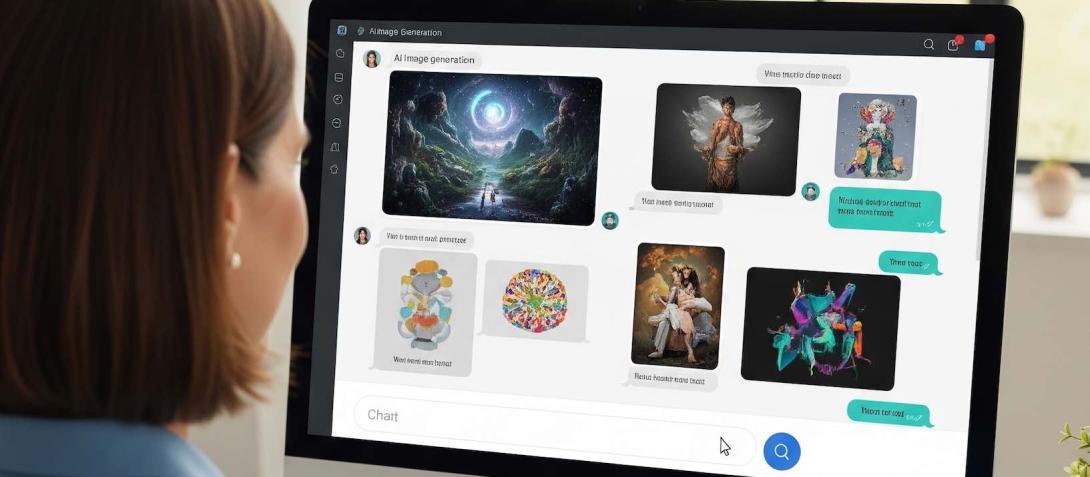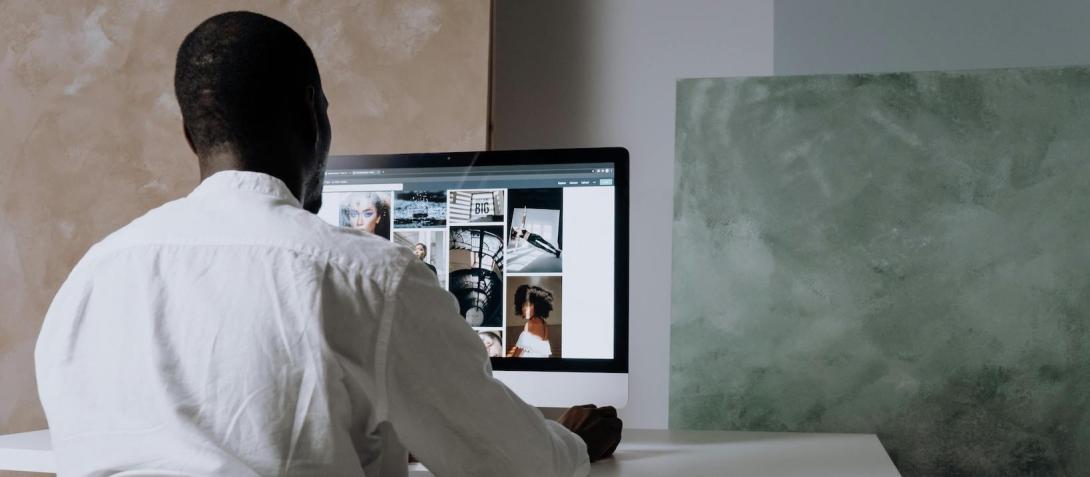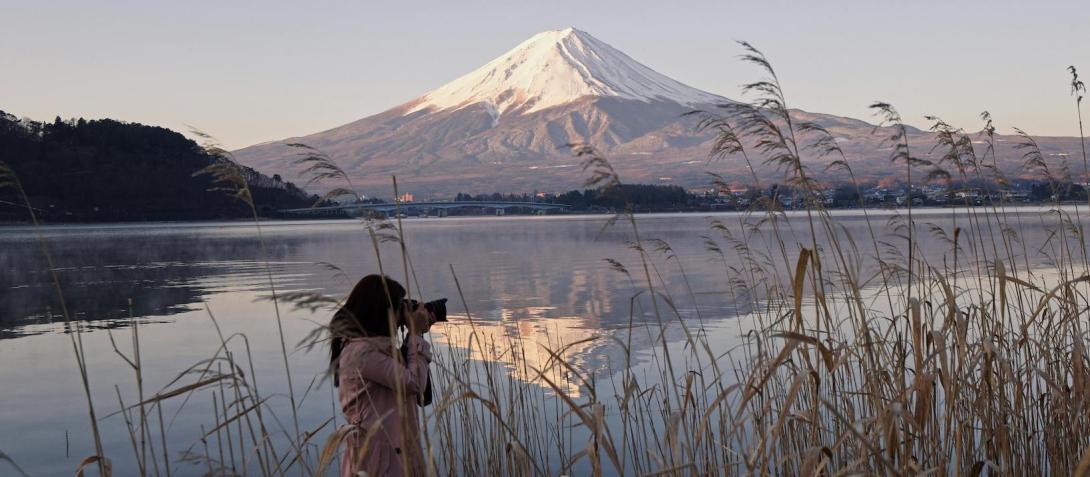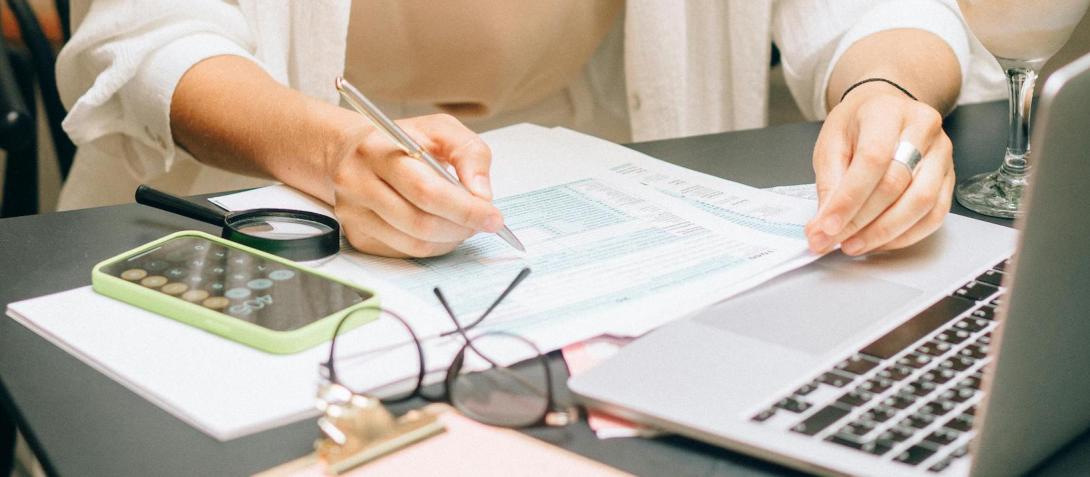AI (artificial intelligence) image generation has advanced significantly over the last two years in terms of quality of output and practical usefulness. Having developed from somewhat shaky beginnings, it is now a technology that cannot be ignored by creatives or anyone requiring imagery for work. There is now a range of options to choose from at different price points; and while none of them is perfect, and they may never have the unique character of human-generated photographs and artwork, the level of competition in the marketplace has led to constant improvements.
We now have the ability with these systems to create relatively natural-looking photo-style images to suit a range of different purposes – and not just the fantastical and unreal images that are still often popularly associated with AI image generation.
At GWS, we make use of stock imagery for our own marketing efforts and designs, as well as for our clients, and we have frequently helped select stock images for clients who did not have appropriate photos available, advising on potential images they could use.
AI image generators offer the capability to almost instantly create a visual representation of anything you can describe in words. This facility, if put to good use, takes away the challenge of finding the right picture in a stock image library website, which can be very time-consuming, and frequently involves compromising on what you want, using what is available and making selections judged to be ‘good enough’ although they may meet only some of your originally envisaged specifications.
The use of AI image generators also bypasses image licensing issues, which have got many websites into trouble when they make use of images that have not been correctly licensed, whether on their blogs or news pages (or anywhere else). The burden of proof is always on the person or organisation using an image to show that they have the rights to use that image, and unless you keep detailed records, you may find that even images for which you have purchased the legitimate licenses can get you into legal trouble and involve paying a fine from a couple of hundred pounds upwards. The level of fines initially demanded by rights holders or third-party enforcement agencies acting on a commission basis on their behalves can depend on the size of the image, its value, and the length of time for which it has been in use on your website. If you have ignored or contested demands to remove alleged infringing images, and lawyers become involved, you can expect the payment demands to increase.
Even if you do keep careful records of image licenses and have them to hand, the time involved in filing a defence and evidencing your license in various different online systems may not be considerable and represent a hidden added cost of using stock images in the first place.
The various organisations that pursue the infringing use of images usually do so on a no-win, no-fee basis, and in general have no way of telling whether an image on your site whose license holder they purport to ‘represent’ actually is legitimately licensed to you. They tend to use web-crawling technologies to search many thousands of websites in an automated ‘fishing’ process that looks for all uses of particular images and takes next to no time from their side, before sending demands to email addresses associated with the domains where any matches are found. Each demand so received potentially takes a long time for the website owner to answer.
Where websites have had photographs taken specifically for them by a professional photographer, even that does not necessarily provide full legal cover. The licenses for those photographs can vary widely, from a limited-use, limited-term license, through to ‘all rights’ ownership, and you might find you need to re-license some such photographs every five years, or pay more for permission to use them in a different context from the one for which they were originally taken.
These problems, considered together with the potential cost-savings of bypassing licensed stock images or professional photography altogether, show why there is a potentially very large base of website owners receptive to AI image generation technology and open to using AI-generated images.
We have reached a point at which harnessing the power of AI image generators to create impressive, photo-real visual assets for use in websites and marketing materials is now a viable option, and for the reasons outlined above may even be a safer one that is preferable to the alternatives, even though, at the time of writing, there are a number of pending lawsuits in different jurisdictions against different AI image providers.
In this article, we shall explore exactly what AI image generators and stock photography sites offer and how they stack up against one another. We’ll examine the pros and cons of each of several alternatives, before considering how the technology in general can potentially be used, and also sharing some thoughts on what the landscape may look like in the future.

Image via Google Gemini. Prompt used: Middle-aged female working at a desk on a desktop computer in front of large office windows. View should be over her shoulder so the screen of the computer is visible. On the screen please display an AI image generation chat with images included
What is an AI image generator?
An AI image generator is a tool that generally uses text-based prompts (some tools will also let you upload an image for reference) to produce an image that it believes is a close match to the description provided in the prompt.
Trained on large data sets of images, along with their related text depiction, these image generators are able to learn what characteristics of an image should be associated with each element within a text prompt. Allowed prompts can vary in length from just a few words to whole paragraphs, but be aware that the level of detail given in the prompt, or lack thereof, is likely to be matched by an equivalent level of detail in the image generated.

Free stock image.
What is a stock image website?
A stock image website offers a catalogue of images, videos and other creative assets that have been produced by creative professionals such as photographers, videographers and illustrators. These assets have typically been licensed to paying third parties via the stock website on terms specified by the owner of the assets, which may be either for editorial use only or for all commercial uses; and if you run a commercial website of any character, you need to be sure that the images you want carry a full commercial license or your use of them may be infringing even if you have paid to use them.
The terms on which such creative assets are licensed will differ site-to-site, with some being free to use and others needing to be purchased. Purchase options offered by stock image websites typically include the choice of either a one-time payment for an individual image or a monthly or annual subscription that allows a set number of images to be used per month.
Pros and cons of AI image generators
Pros

Image via Google Gemini. Prompt used: A man in his mid 20s presenting a completed piece of design work to the rest of his small team. The piece of work will be a marketing campaign for a food brand and show all images and include no text
1. Fast and efficient turnaround
Using these tools, images can be created almost instantly. Simply type in your prompt, then hit the button labelled 'Generate', and in less than a minute you will have one or more images presented to you. You can then decide whether they are good enough or whether a further refining of your prompt is needed before the image output is ready for use in your campaign or on your website. Even if you do decide to refine your text prompt, the overall process is unlikely to take longer than a few minutes before you have an image you are happy to use. This quick and efficient iterative process can be hugely beneficial if you are working to a very tight deadline without the time to design something, or if you are working for a small business that may not have design resource available.
2. Anything is possible / customisation
When it comes to AI image generation, the level of imaginativeness inherent in your prompt will determine how imaginative the creative end-product of the routine looks. There really is no limit to what is possible for AI image generators in terms of the combination and integration of different elements and instructions, so you can be as creative as you like when drafting your prompts. Since these tools also typically allow for iterations, if the one you are using has not quite attained the image you had in your head, edit your prompt and try again. Some AI image generators further offer the ability to change certain parts of a previously generated image, so you can narrow in and edit accordingly.
3. Cost-effective rates
A subscription to an AI image generator tool can work out more cost-effective than one to a stock image site, particularly if you need to create a significant number of images (as stock imagery website subscriptions tend to carry strict limits on allowed downloads per month). With marketing budgets tightening across the board, saving money in this area may make good business sense, making subscribing to an AI image generator instead of a stock photography website an attractive option for marketing managers looking to save costs.
Cons
1. Quality
The quality of output from AI image generators can sometimes be lacklustre; and results will vary depending on not only the user's prompt but also the particular strengths and weaknesses of the generator concerned. Prompts will need to be refined and engineered to ensure that each tool is utilised in the most effective way, taking its limitations into account. You should seek to ensure that all generated images are reviewed thoroughly to check for mistakes and unsatisfactory limitations, and that defective and sub-standard ones are rejected as you seek to uphold quality standards for images on your website.
2. Number of iterations
Multiple iterations may be needed, depending on the asset you wish to create and the successfulness of the prompt you have input. The prompt may need to be edited a number of times or even rewritten completely in order to achieve your desired result, which could take longer than anticipated. The time between first draft and a satisfactory output can be reduced with experience, through trial and error and learning how to create a successful prompt for particular purposes within a particular AI image generation system.

Image via Google Gemini. Prompt used: An older woman wearing a hat on a sunny day.

Image via Google Gemini. Same prompt used to test if similar image would be produced: An older woman wearing a hat on a sunny day.
3. Risk of duplicated or similar images/ uncertainty
As AI image generators are trained on a library of existing images, there is no way of knowing whether an image created from a prompt you have written will be recreated in some way by another user with a similar prompt. There could also be a risk that a generated image includes some element that is subject to copyright restrictions, on the basis of the AI having been trained on specific images or ones with specific elements that are unique to the work of their creator.
Pros and cons of stock photography websites
Pros
1. Quality control
Images and other creative assets available on stock websites are generally the work of professional photographers, videographers and illustrators, as a result of which the quality of these assets tends to be high. Quality standards are also monitored by the stock websites themselves, ensuring that submitted assets match size, format and resolution requirements, along with any other standards they may have set out, before accepting them in their image banks.

Free stock image.
2. The human element
Stock photography offers images and assets delivered by humans, mostly highly-proficient creatives who produce these assets as part of their job. They will have set the scene, identified the subject matter, and set the correct lighting, depth and focus of the shot, in order to achieve the exact feeling and emotion they want from the image. AI image generators lack the human element that goes into setting up the perfect shot.
3. Ready-made content
To use a stock photography website to which you already have an active subscription, you simply need to navigate to it, search for your required image, and download and save this image. Depending on the specifications of the image you required, this process could be completed in less than minute, although it may take several minutes for you to find an image with which you are happy. How long you allow for your search before taking the plunge is really up to you. You are then free to use the image you have chosen in whatever capacity is allowed for by the terms under which it has been licensed. This process can be quite efficient and save time and mental effort compared with having to devise a suitably intricate prompt.
Cons
1. Copyright infringements
When you have a subscription to a stock photography website, you are permitted by license agreements to use any of the images you download as allowed for by the terms of their licenses. When your subscription ends, you are still permitted to use the images you purchased the license for during your subscription. However, some licenses may include restrictions on media in which the image is permitted to be used, the quantity of uses allowed, or even the timeframe within which you are permitted to use it. In some cases, an image previously available on a stock website may be removed by the copyright holder to the image, which could result in an image rights enforcement agency challenging your rights to use that specific image. You may then be required to produce proof that you do in fact possess a legitimate license to use the image. Currently this issue does not apply to AI-generated images.
2. Lack of customisation
Stock imagery does not generally allow for any customisation. The images offered when you search for a particular phrase are what you will need to work with; and sometimes these will not align with the exact message your brand is hoping to communicate through a campaign. Using an image that does not quite fit the brief owing to the absence of more specifically matching resources and / or to time constraints affecting your search for the ideal image can be disadvantageous, as you run the risk of the visual elements of your campaign not resonating with your audience, and therefore of your campaign as a whole failing to achieve the results you had hoped for or required.

Free stock image.
3. Subscription costs
The costs of subscriptions to stock photography websites vary depending on your needs and the number of images you use per month. The more assets you would like and the higher the quality needed, the more you will tend to pay. When a number of AI image generators are seemingly offering generated images for free, we can see why this would make them an attractive alternative for a business looking to reduce the costs associated with the use of images for their website.
The future of AI image generators
In our first experiments trialling AI image generators in 2023 and 2024, we, like others, found that the output from these tools lacked the refinement needed for to be useful in day-to-day work.
Extra fingers, strange-looking necks, warped nails and unreadable text were just some of the problems we encountered, along with AI hallucinations leading to the inclusion in the images produced of inappropriate or irrelevant elements which were not implied in our prompts.
We recently trialled a number of these tools again, with the aim of recreating stock images we have previously used on our own website. While not all resulted in equally favourable or satisfactory results, one or two did an excellent job.
These tools have slowly been advancing in their capability and the consistency with which they produce usable results, and we have no doubt these improvements will continue. We have noticed a number of new names that have entered the market, making the general landscape more competitive as the developers of each product attempt to outperform their rivals.
We will continue to monitor the progress and accuracy of these tools - but given our latest test results, we believe that these image generators are now a viable way of creating imagery for business use.
Future legislation will also be worth watching closely. The regulation of these tools is still very much a grey area as governments desperately attempt to keep up with evolving technology. Many content producers are currently arguing that existing AI models have been trained on copyrighted material across both text and image.
In 2023, Getty Images, a leading stock image company that was founded in London in 1995, brought legal proceedings against text-to-image model Stable Diffusion, which is owned by UK-based company Stability AI.
Getty argued that the image generator had been trained on a number of its photographs without authorisation, resulting in the infringement of a range of its UK intellectual property rights. These copyright claims have since been dropped, potentially due to a lack of proof that the accused behaviour had been carried out under UK jurisdiction. In respect to secondary copyright infringement, trade mark infringement and alleged ‘passing off’, Getty continues to claim that Stability AI is accountable, all of which points the company denies.
Getty is not the only company that has taken action against AI image generators. In June 2025, film animation giants Disney and Universal filed a copyright complaint against San Francisco-based text-to-image AI company Midjourney. First launched in 2022, the company's image generator has since gained momentum and a significant base of active users. Disney and Universal claim that the tool has openly produced a number of images using animated characters whose likeness is protected by copyright. Users have been able to create various works that include characters from Star Wars, Frozen and Spiderman. The difficulty in these types of cases is in Disney and Universal being able to prove that Midjourney has acted outside the terms of the applicable copyrights and has not adapted their characters in a way allowed for by law. Generally, using characters like-for-like would infringe copyright terms.
The Disney and Universal case is in its early stages at the time of writing, but the eventual ruling when it does come may well set a standard that both limits and determines the way ahead for AI companies as well as the content creators who make use of their content.
The future of stock photography websites
As for the future of stock photography websites, while they do offer the advantages of being able to guarantee a certain standard of quality and to provide ready-to-use images, we wonder if, in time, AI image generators will be widely recognised as having surpassed their usefulness at considerably lower cost to the end-user. If so, we can expect to see the market for stock photography websites shrinking.
AI image generators have the potential to continue learning and refining their routines so that they produce better and more realistically correct images with each successive developmental iteration; and the speed at which they can operate while still producing satisfactory results is likely to increase.
Recently, some stock image websites have taken note of the competition and are ensuring they are not left behind in the AI image generation race by adapting their offerings to meet consumer demand, specifically by providing image generation and editing tools alongside their catalogues of stock imagery and videos.
By harnessing the power of AI, these sites can offer a fully rounded service, allowing users both to create new images and to edit and enhance existing stock images available from them.
As with all business, evolving alongside technology and utilising new tools as they become available is probably going to be the only way for conventional stock photography websites to remain relevant in the future.
One big advantage a stock website does have over an AI image generator site is that all of their images are supplied by humans. That human touch and authenticity will be hard for AI image generators to replicate, and we hope will be what ultimately protects professional photographers from having to abandon the stock photography market. As much as AI can learn, the capture of authentic-looking emotion may be a factor that sets human-made photographs apart from generated images in the future.
Amid the influx of generated images everywhere we look, the demand for authentic photographs that portray a moment in time or capture a relatable feeling from real human subjects may well prove to be enduring, as users continue to appreciate pictures they can relate to more deeply at a human level.
Conclusion
With multiple variables at play in the contest between AI image generators and stock photography, it is difficult to say that one route or the other is universally preferable or to anticipate whether legal rulings may arrest the current rise of AI image generators.
Tighter restrictions on the use of existing images to train AI image generators may negatively impact their future improvement in terms of the quality and relevancy of their output. If they fail to improve at the rate that we have grown used to, this may slow adoption, and mean they may take longer to fulfil their current promise.
In conclusion, we feel that despite the potential regulatory hurdles, AI image generators will ultimately prove to be extremely useful for businesses and marketers in terms of producing imagery and video quickly and to meet exact requirements, at a fraction of the comparable cost of stock photography or professional photography.
This said, we strongly believe that there will remain a valuable place for authentic, human-made images that can convey emotion and speak more powerfully to the consumer. In the future, the avoidance of AI images may be a defining aesthetic choice that marks out websites seeking to market their wares as being ones of exceptional quality and authenticity.
If you would like more information on our services, or have any thoughts on this article you would like to share, please send us a message.
